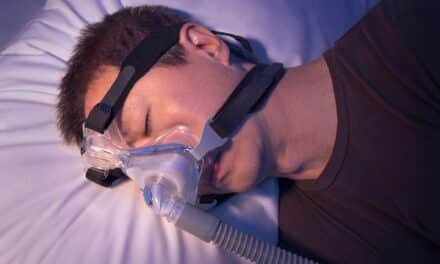| By Johnny Goodman |
Does your office play CPAP mask fantasy football? Our does. The ritual occurs every time a new mask is released to market. We surf to the manufacturer’s Web site, read up, debate specs, and wait for our turn to handle the sample mask being passed around. After it has been tried on, broken down, and stretched out, the debate begins. How well will this mask do in the market and why? Predict correctly and earn respect; choose poorly and be razzed for months. In this spirit, I am reflecting on 2009 trends and offering up my predictions for CPAP masks in 2010.
2009: YEAR IN REVIEW
In 2009, CPAPtalk.com launched the Product Challenge. The challenge ushered in a structured way to see into the bedrooms and minds of users as they used, struggled with, and succeeded with their equipment. We’ve had quite a few CPAP mask title fights in 2009, including Breeze versus Swift LT, ComfortGel versus Ultra Mirage II, and Opus 360 versus Swift LT. Many products, such as the Opus 360 and the Ultra Mirage II, did even better in challenges than their market share suggested they would. Surprisingly, the market-share-leading ComfortGel struggled in its challenges.
What did the winning masks have in common? They tended to seal well right out of the box. CPAP users expect a mask to “just seal.” They believe that fitting adjustments should be oriented toward “fine” comfort tweaks. Masks that sealed well up front and were also lighter or less cumbersome than the competition were especially well received. The makers of good masks were careful to use soft, breathable materials wherever the mask touched skin. They paid attention to air diffusion, making sure that it was done quietly and angled so as not to hit a bed partner during sleep. We note that brand was not necessarily a predictor of product quality, although some popular brands had success. When we spoke with the teams behind successful masks, we found that they tended to view the product they were building as more of a consumer comfort device and less of a required piece of medical equipment.
The concept of CPAP equipment as a consumer device has also driven a new abundance of product information available in 2009. If customers can get reviews and opinions as they shop for cars and computers, why not CPAPs? 2009 saw this kind of data move from a novelty to an expectation.
One of the biggest CPAP mask releases of 2009 was the ResMed SoftGel CPAP mask. It has been very well reviewed and received by the online CPAPtalk.com community and by CPAP.com shoppers. At the time of writing, it boasts a 4.7 out of 5 star rating, which is absolutely outstanding. It is a clear competitor of and threat to the Respironics ComfortGel.
2010: PREDICTIONS AND TRENDS A BIG INCREASE IN SAVVY PATIENTS
The Internet allows CPAP equipment product quality to be measured and results easily viewed. When 5 minutes of online research can create a lifetime of CPAP mask comfort, most will choose to stay informed. This is good as it allows dealers, patients, and product data to team up and point the way toward better products. This trend sprouted in 2009 and will grow significantly in 2010.
The number of patients willing to accept any CPAP mask is going down daily. Increasingly, patients are making their own choices using the Internet as a resource.
THE SEARCH FOR BETTER MASKS WILL INTENSIFY
In an industry where compliance with treatment hinges on patient interfaces, providers and patients alike have needed to know “What mask should I buy?” Previously, we had only our own experiences or the help of so-called experts to go by. Now, the Internet has made CPAP patient satisfaction with masks easily available. The power of the Internet allows rapid collection of and access to rankings of what patients thought of the mask they bought. Manufacturers are increasingly aware that releasing less than the best products into the market is a very bad idea. Manufacturers, providers, and patients who embrace the pursuit of better masks will be well rewarded during the next decade.
“LOW COST” MASKS FALL OUT OF FAVOR
As reimbursement becomes compliance focused, the meaning of low cost shifts from the cheapest you can buy to the cheapest available that will maximize billable compliance. The shift to mask quality is already under way in the form of the ResMed SoftGel and new nasal seal styles like the Respironics EasyLife.
In a country where insurance dominates reimbursement, dealers have always had to ask themselves, “Why pay more for a CPAP mask when the reimbursement is fixed?” Some low cost masks performed well, but most have done tremendous damage to CPAP patients and the industry. We will never know how many patients are not compliant today because a dealer saved a few dollars up front. Who knows how many more dollars could be flowing through the industry if dealers and manufacturers had always relentlessly pursued patient compliance?
Dealers may not need to struggle with the reimbursement dilemma much longer. Medicare requires proof of patient compliance. Other payors will follow. Dealers will provide the best because that is the way to profit.
MASKS WILL DELIVER BETTER COMPLIANCE
As a medical industry, we should have seen numerous studies on this important subject. Sadly, there is very little useful data. A database with tens of thousands of patients, their masks, and their outcomes could produce useful insights. Expect data to support useful conclusions by 2011. CPAP providers will need to put out masks that generate the best compliance in order to survive.
Masks will be scrutinized
It is difficult to determine the performance of a newly released mask. In fact, there are signs of “new mask exhaustion.” The industry has been bombarded with new masks. CPAP.com has 88 different mask models (not including different sizes) available for purchase. Every new mask represents a significant challenge to every serious buyer and clinician. How good is it? Should I do the work to find out? Where and how does it work best? What are its shortcomings? Finding the answers involves testing. The learning curve is very steep and littered with patients who at a minimum had a less than optimal experience. The patients at CPAPtalk.com are providing answers. Expect that newly released innovative masks will be tested against leading market share masks by these independent-minded CPAP users. The detailed results will speed the acceptance of breakthrough products and hasten the demise of second-rate products.
LESS MASK FITTING REQUIRED
Respironics recently coined the term “Auto Seal” for its line of nasal masks. This is interesting as is the design of the mask, which seeks to eliminate a traditional forehead stabilizer from the mix. You will also continue to see an increased number of masks come with fit packs or simply with all sizes included. As designs improve, more and more masks will “just work” out of the packaging. This is a neat trick for high end masks now, but it will be a basic expectation in 2010.
More Consumer-Oriented, Less “Medical” Masks
Have you asked yourself lately, “When did all the CPAP machines start looking like alarm clocks?” 2010 is the year when a similar movement will occur with CPAP masks. The Swift LT and Opus 360 are front runners in this movement. It is more than just having color options; it is about minimizing the amount of gear and weight on one’s face and head and designing away from the traditional look of a nasal CPAP mask.
RISE OF THE NASAL PILLOW STYLE OF CPAP MASK
Nasal masks, the standard for all these years, have slowly been losing share to nasal pillow systems. This is the year the trends flip and nasal pillow systems come to dominate. A few different trends will cross to make this happen. The first is that manufacturers are getting really good at making comfortable pillow systems, with even better systems on the way. Second, sleep techs can get easy seals with less fuss, which has been an issue in the past.
QUIET, QUIET, QUIET
In most cases, CPAP masks release more noise from the CPAP system than the CPAP machine itself. New designs will be held to ever higher standards.
Johnny Goodman is general manager at CPAP.com. The opinions and views presented in the article are those of the author and do not necessarily coincide with the point of view of Sleep Review.




